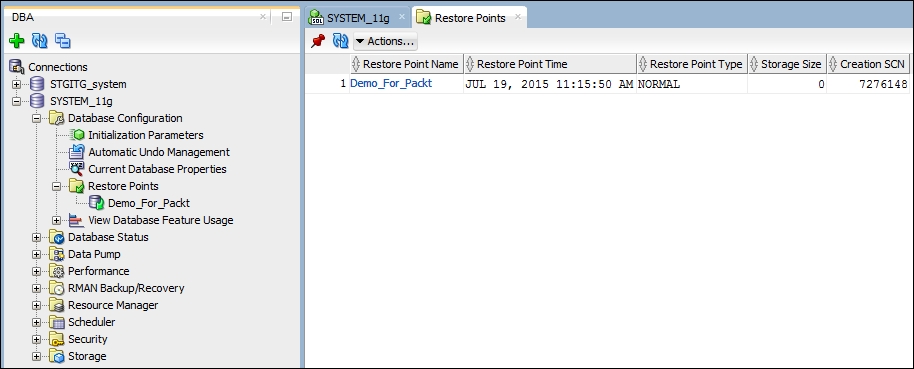Oracle Flashback database and restore points enable us to rewind the database back in time to correct any problems caused by logical data corruption or user errors, and it doesn't require any restoration of backup. There are two types of restoration points, which are as follows:
Normal Restore Point: Assigns a restore point name to an SCN or specific point in time. The control file stores the name of the restore point and the SCN.
Guaranteed Restore Point: Is a normal restore point, but additionally serves as an alias for an SCN in recovery operation. The only difference is that the guaranteed restore points never age out of the control file and must be explicitly dropped.
To create a restore point or view existing restore points, click on Restore Points.

View Database Feature Usage: Selecting this option shows us the list of all available database features and the detected count of usages and versions of all those features.



